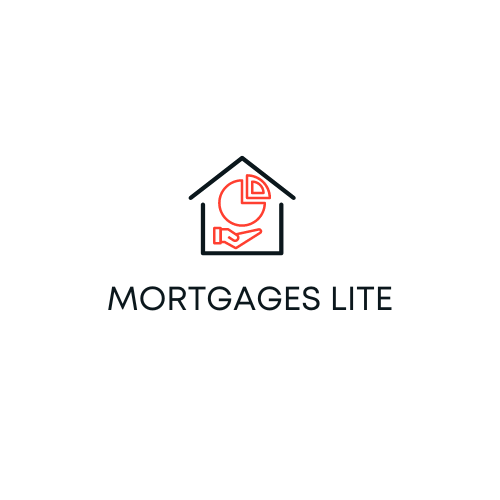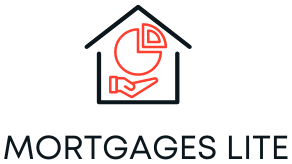Let me tell you a little secret: When I was preparing to buy my first home, the mortgage down payment was the single most intimidating part of the process. Sure, looking at houses was fun, and imagining myself relaxing in my future backyard was exciting. But that moment when I realized how much I needed to save for a down payment? That was the real wake-up call. It’s a daunting figure for most people, but understanding how down payments work and how to strategize for one can completely transform the process.
If you’re like me, you’re probably wondering how much you really need for a down payment, what options you have, and how to make it more manageable. So, let’s break it down together. By the end of this guide, you’ll feel empowered, informed, and ready to tackle that mortgage down payment like a pro!
What Is a Mortgage Down Payment?
Simply put, a mortgage down payment is the portion of the home’s purchase price that you pay upfront. It’s a critical step in the home-buying process and typically expressed as a percentage of the total cost of the house. Most commonly, down payments range from 3% to 20%, though there are some loans with options outside this range.
This initial payment reduces the amount of money you need to borrow from a lender. For example, if you’re buying a $300,000 home and put down 10%, that means you pay $30,000 upfront and borrow the remaining $270,000. The size of your down payment not only impacts how much you’ll need to finance, but it can also affect your interest rate and monthly payments.
How Much Do You Really Need for a Down Payment?
Ah, the age-old question: How much should you put down? Many people automatically assume they need a 20% down payment, but that’s not necessarily the case. While putting down 20% can help you avoid private mortgage insurance (PMI), there are many options for smaller down payments.
Here’s a breakdown of common down payment requirements:
- Conventional Loans: Typically, these require between 3% and 20% down.
- FHA Loans: With Federal Housing Administration (FHA) loans, you can put down as little as 3.5%.
- VA Loans: If you’re a veteran or service member, VA loans often offer 0% down payment options.
- USDA Loans: Available for rural homebuyers, USDA loans may also provide a 0% down payment option.
So, if saving 20% seems impossible, don’t stress! There are plenty of loan options that can help you get into a home with a much lower down payment.
How Does Your Down Payment Affect Your Mortgage?
Your down payment has a direct impact on several key aspects of your mortgage:
- Monthly Payments: A larger down payment reduces the amount you need to borrow, which means lower monthly mortgage payments. The less you borrow, the less you’ll owe over time.
- Interest Rates: Lenders often reward bigger down payments with lower interest rates. Why? Because a higher down payment signals less risk to the lender.
- Private Mortgage Insurance (PMI): If you put down less than 20%, you may need to pay PMI. This is a type of insurance that protects the lender in case you default on your loan. It’s typically an added cost to your monthly mortgage payment, and it can vary depending on your loan type and down payment size.
How to Save for Your Down Payment
Saving for a down payment can feel overwhelming, but with a few smart strategies, it’s more achievable than you think. Here are my top tips for building your down payment fund:
1. Set a Realistic Savings Goal
Start by figuring out how much home you can afford, then calculate the down payment percentage based on that price. Once you have your target number, break it down into smaller, monthly savings goals. It’s less scary to think about saving $500 a month than trying to reach $40,000 in one go, right?
2. Open a High-Interest Savings Account
If you don’t already have one, consider opening a high-interest savings account dedicated solely to your down payment fund. These accounts typically offer better interest rates than regular savings accounts, meaning your money will grow faster over time.
3. Automate Your Savings
One of the best ways to make saving painless is by automating it. Set up an automatic transfer from your checking account to your down payment fund each payday. This ensures you’re consistently putting money away without even thinking about it.
4. Cut Back on Unnecessary Expenses
This one’s tough, but if you’re serious about homeownership, trimming your budget in other areas can make a huge difference. Consider cutting back on dining out, shopping sprees, or that daily $5 latte. Every little bit helps.
5. Explore Down Payment Assistance Programs
Did you know there are down payment assistance programs available? Many local and state agencies offer grants or low-interest loans to help first-time homebuyers cover their down payment. It’s definitely worth checking to see if you qualify for one of these programs.
First-Time Homebuyer Programs to Explore
Speaking of assistance, if this is your first home, you may have access to some valuable first-time homebuyer programs that can make the down payment process easier. Many of these programs are designed to make homeownership more accessible by reducing the amount of cash you need upfront.
- FHA Loans: As mentioned, these loans offer low down payments (as low as 3.5%) and are a popular choice for first-time buyers.
- Good Neighbor Next Door: This program offers significant discounts to teachers, police officers, and other public servants when buying homes in revitalization areas.
- Down Payment Assistance Loans and Grants: Many states have specific programs that provide either forgivable loans or outright grants to help cover down payment costs.
Benefits of a Larger Down Payment
While smaller down payments are certainly possible, there are some definite advantages to putting more money down if you can:
- Lower Monthly Payments: Since you’re borrowing less, your monthly payments will be lower.
- Better Interest Rates: A larger down payment can help you qualify for a better interest rate, saving you thousands over the life of your loan.
- Instant Equity: The more you put down, the more equity you have in your home from day one.
- Potentially Avoid PMI: As mentioned, a 20% down payment allows you to bypass private mortgage insurance, which is a big financial win.
Conclusion: Making Your Mortgage Down Payment Work for You
When it comes to buying a home, the down payment is one of the most important factors to consider. But with the right information and a solid plan, it doesn’t have to be overwhelming. Whether you’re aiming for a smaller percentage and taking advantage of assistance programs or working towards a larger down payment to secure a better rate, there are options to suit every financial situation.
Take the time to explore different loan types, budget accordingly, and know that homeownership is within reach. I know firsthand how nerve-wracking it can be, but trust me, once you’ve nailed your down payment strategy, everything else starts to fall into place!
FAQ: Mortgage Down Payment Essentials
1. How much should I aim to save for a down payment?
This depends on your personal situation and the type of loan you choose. While 20% is ideal to avoid PMI, many loans allow down payments as low as 3% or even 0% in certain cases.
2. Can I buy a home with no down payment?
Yes, some loan programs, like VA and USDA loans, offer zero down payment options for qualifying buyers.
3. Is it better to put down 20%?
If you can afford to put down 20%, you’ll avoid PMI, get a lower interest rate, and have lower monthly payments. However, it’s not always necessary, and there are plenty of good loan options for smaller down payments.
4. What is private mortgage insurance (PMI)?
PMI is an insurance policy that protects the lender if you default on your loan. It’s typically required if your down payment is less than 20%, and it adds to your monthly mortgage costs.
5. Can I use gift money for my down payment?
Yes, many lenders allow gift money from family or friends to be used for your down payment. Be sure to check your lender’s specific requirements.




